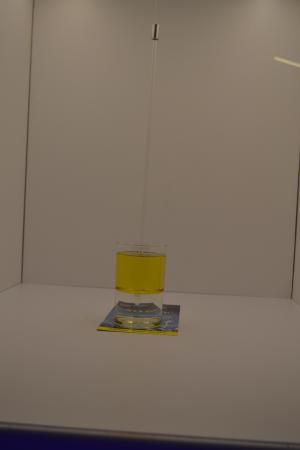Some of our ideas on exhibits about light
Below you could find some of our realized ideas on the experiments with light.
You may have one of those or they can serve as a contribution to the new realization!
Prices are given on request – please contact us!
O.1. Diffraction and interference
This stand demonstrates diffraction of light on single slit and interferenco of light on the difraction grid.

 “>
“>
O.2. Photovoltaic effect
Two of our realizations on photovoltaic effect.
O.3. Why do we see?
A simple presentation of all the physical phenomena necessary for us to be able to observe the world around us with the help of the sense of sight..

 “>
“>
O.4. Reflection and diffusion of light
A stand presenting the law of light reflection and the reasons why light is diffused on various objects.
O.5. Kaleidoscope
A position allowing it to enter a large kaleidoscope and see endless tunnels and crowds of our “clones”.
 “>
“>

O.6. Curved mirrors
How do we look in the curves mirrors? Can you “add” or “subtract” your weight? 🙂
O.7. Refraction of light
Stand showing the law of refraction on a flat plate



O.8. Disappearing glass
A stand showing how an object can disappear before our eyes – an explanation of the law of refraction.
O.9. Mirage
A stand presenting the propagation of light in a heterogeneous medium – explaining what a mirage is.



O.10. Large optical fiber model
A large optical fiber model in which visitors can change the course of the light beam and observe the total internal reflection.
O.11 Optical fiber made from water
A fiber optic model that uses a stream of water in which laser light is trapped.




O.12. How the lenses work?
A table showing how rays of light run through different types of lenses and prisms. It can also be used for the presentation of lens defects.
O.13. Cylindrycal lens
A stand presenting the principle of operation of a cylindrical lens and the method of image formation using this type of lenses.




O.14. Optical bench
Optical bench allows you to present how the image is created in the human eye and how you can correct eye defects. It also shows that the same lens can both enlarge and reduce the image of the item.
O.15. Prism – hidden colours of light
A stand presenting the course of a white light ray through the prism and the effect of fission of light on the component colors..




O.16. The secret of the soap buble
Why the soap bubble has so many colors? We show here the reason for the formation of colors on the membrane of the soap bubble by the phenomenon of interference (overlapping rays) of light.
O.17. Red, green, blue – absorption of light
A stand presenting how to smooth objects lit with different colors of light, how the colors are absorbed and how white light can be obtained with only three colors – red, green and blue.





O.18. Why the Sun is red?
Stand presenting the effect of light scattering on particles suspended in the atmosphere, causing the effect of the “red Sun”.
O.19 Closer or farther – optical illusion
An optical illusion aimed at showing how the human brain is accustomed to the fact that objects seen as large seem to be closer to us and objects seen as small seem to be located further away from us.



O.20 Action animation
Optical illusion of a bouncing ball – simple images can be “set in motion” by covering and revealing their respective areas.
O.21. Waterfall of time – stroboscopic effect
The stand which consists of three turning forks and speakers explains the phenomenon of acoustic resonance.



O.22. Laser harp
Bądź jak Jean Michel Jarre i zagraj na laserowej harfie! Ilość i kolor strun jest dowolna.
O.23. Benham’s disk
Optical illusion and the perception of whirling shapes by the human eye. Black-and-white images can only get colors if we put them into motion. One-dimensional objects can suddenly be perceived as three-dimensional as they rotate!
